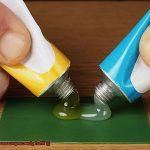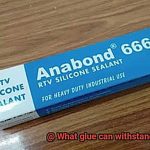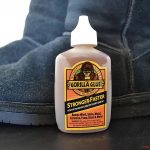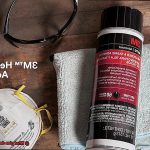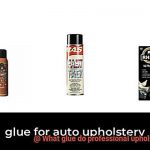Today, we’re diving deep into the sticky world of glue to answer a burning question: which glue dries the hardest? Whether you’re a DIY fanatic, a craft connoisseur, or just someone who loves nerding out about everyday stuff, you’ve come to the right place.
Glue is like a superhero in our toolkit, but not all glues are created equal. Some dry all soft and squishy, while others harden up like an indestructible fortress.
Get ready to explore the wild world of adhesives with me as we uncover the glue that can withstand anything and come out on top as the hardest of them all.
Types of Glue
Contents
- 1 Types of Glue
- 2 Factors to Consider When Choosing the Right Glue
- 3 Advantages and Disadvantages of Each Type of Glue
- 4 Proper Surface Preparation for Maximum Hardness
- 5 Curing Conditions for Optimal Results
- 6 Tips for Using Different Types of Glue
- 6.1 Understand the Risks:
- 6.2 When using glues that emit fumes, it is essential to work in a well-ventilated area or wear a mask to protect your respiratory system. If you have sensitive skin, consider wearing gloves to prevent direct contact with the glue. By understanding the risks, you can take appropriate measures to protect yourself.
- 6.3 Follow Safety Instructions:
- 6.4 Every type of glue comes with specific instructions for use, including application techniques, drying time, and safety recommendations. It is crucial to read and follow these instructions carefully. Skipping or disregarding safety instructions can lead to accidents or poor results.
- 6.5 Work in a Well-ventilated Area:
- 6.6 Open windows or doors to allow fresh air to circulate. If ventilation is limited, consider using a fan or wearing a respirator mask to reduce exposure to fumes. By working in a well-ventilated area, you can minimize the risk of respiratory irritation or other health issues.
- 6.7 Store Glue Properly:
- 6.8 Proper storage of glue is essential for maintaining its effectiveness and safety. Most glues should be stored in a cool, dry place away from direct sunlight or extreme temperatures. Storing them upright and tightly sealed will prevent them from drying out or becoming less effective over time.
- 7 Common Applications for Different Types of Glue
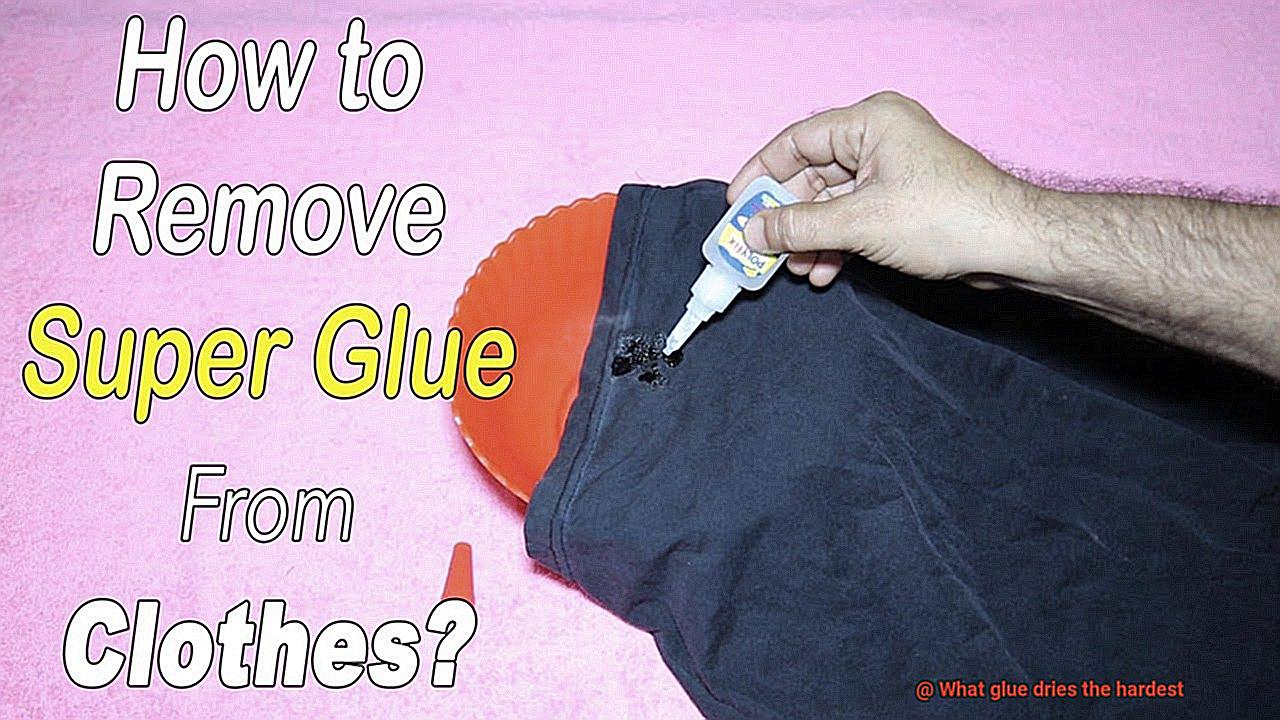
Today, we embark on a sticky journey to discover the diverse types of glue and their remarkable properties when it comes to drying hardness. Whether you’re an imaginative artist or a handy DIY expert, understanding which glue dries the hardest can make all the difference in your projects. So, let us dive headfirst into this captivating exploration.
Construction Adhesive:
When constructing something grand and sturdy, fret not, for construction adhesive has your back. Crafted for heavy-duty projects such as construction or home improvement, this adhesive possesses the resilience of a thousand nails. It fearlessly bonds materials like wood, metal, concrete, and ceramics. Once dried, it transforms into an unyielding fortress, capable of withstanding the harshest conditions life throws its way.
Silicone Adhesive:
For those involving ceramics or glass, look no further than your trusty ally – silicone adhesive. This remarkable glue forms an unbreakable bond between these delicate surfaces and dries to a finish as hard as diamonds.
It fearlessly endures high temperatures and even thrives in the presence of water or moisture. So, whether you’re fixing a cherished ceramic mug or restoring a delicate glass vase, silicone adhesive is your unwavering sidekick.
Epoxy
Today, we embark on an extraordinary journey into the realm of epoxy adhesive. Prepare to be captivated by its awe-inspiring strength, unparalleled durability, and remarkable versatility. Epoxy is not your average glue – it’s a superhero in the adhesive world, capable of conquering any bonding challenge with unwavering tenacity.
Let’s begin with the basics. Epoxy is a two-component adhesive composed of a resin and a hardener. When these two elements combine in perfect harmony, a chemical reaction occurs that transforms this unassuming adhesive into an indomitable force.
One of the most astounding qualities of epoxy is its ability to form an unyielding bond. Once it sets, it becomes rigid and impenetrable, making it one of the strongest glues available. It can withstand immense pressure and bear heavy loads, making it an invaluable companion for construction projects, woodworking endeavors, and automotive repairs.
But wait, there’s more. Epoxy is not only strong; it’s also incredibly resilient. It scoffs at water, chemicals, and heat, standing firm in the face of adversity. Its resistance to these elements adds to its longevity and makes it suitable for a wide range of applications across various industries.
Speaking of versatility, epoxy has a knack for bonding with nearly any material you can think of – metals, plastics, ceramics, glass, wood – you name it. It’s like the glue equivalent of a social butterfly. This adaptability makes it an indispensable tool in countless projects.
But epoxy doesn’t stop there. It possesses another remarkable ability – the power to fill gaps and provide structural support. Need to mend that broken chair leg? Epoxy is your go-to solution. It will give your repair job the strength it needs to endure.
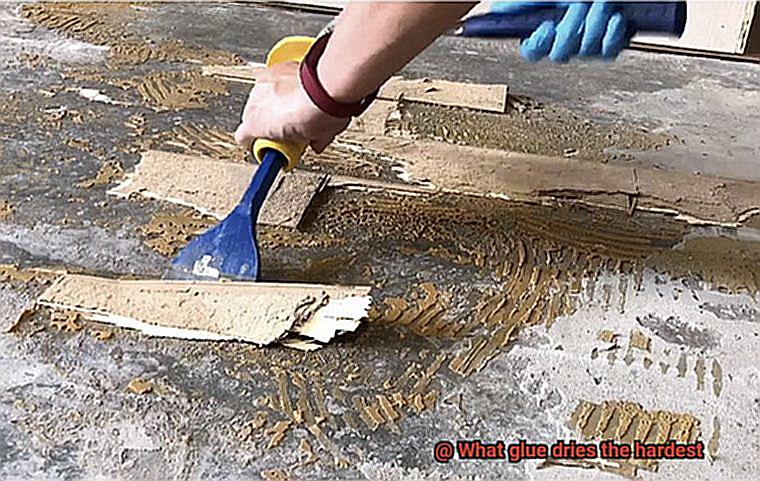
Now, let’s explore the different forms epoxy comes in. Liquid epoxy allows for easy application, while gel epoxy is perfect for vertical surfaces or overhead use. And for filling voids or shaping, there’s putty epoxy. This diversity empowers you to tackle any project with confidence and ease.
However, before you dive into the world of epoxy, a word of caution – it demands proper surface preparation and precise mixing ratios for optimal bonding strength. So, pay close attention to the instructions and unlock the full potential of this adhesive powerhouse.
Now, let’s discuss curing time. The duration varies depending on the specific product and conditions, but be prepared to exercise a little patience. It generally takes several hours for epoxy to fully set and cure. But once it does, you can sand it, paint it, or stain it, opening up endless possibilities for achieving a flawless finish.
And there you have it – a comprehensive overview of epoxy adhesive. Its exceptional strength, durability, resistance to water and chemicals, versatility in bonding materials, gap-filling capabilities, and various forms make it an unrivaled adhesive superhero.
Cyanoacrylate (Super Glue)
Unleash the power of the unsung hero of adhesives: Cyanoacrylate, also known as Super Glue. This remarkable adhesive has been saving the day since its accidental discovery in the 1940s. Strap in and get ready to explore the captivating world of Super Glue as we uncover its properties and versatile uses.
Super Glue is famous for its lightning-fast drying time. In a flash, cyanoacrylate molecules spring into action, forming an unbreakable bond in mere seconds to minutes. It’s like having a superhero by your side, ready to tackle any repair job with lightning speed.
This incredible adhesive isn’t picky when it comes to materials. It effortlessly bonds plastics, rubber, metal, ceramics, and even certain types of wood. From fixing broken toys to mending jewelry, Super Glue has got you covered.
But beware. Super Glue does have its kryptonite. Surfaces that are oily or contaminated with dirt or moisture may not adhere well. So, it’s crucial to ensure your surfaces are clean and dry before applying this mighty adhesive.
Once Super Glue sets, it becomes a force to reckon with. Its bond is so strong that it can handle high-stress applications with ease. Whether you’re repairing a shattered vase or reinforcing a broken chair leg, Super Glue will hold it together like a champ.
But wait, there’s more. Super Glue does have its Achilles’ heel: extreme temperatures. Exposing it to frigid cold can make it brittle, while excessive heat weakens its bond. So, keep this hero away from extreme weather conditions.
Polyurethane
Polyurethane glue, the superhero of adhesives, is a force to be reckoned with in the world of DIY projects. Its exceptional strength and durability make it a top choice for those seeking a reliable bond that will stand the test of time. But before you dive headfirst into the world of polyurethane glue, let’s explore its advantages and disadvantages.
First and foremost, let’s talk about the strengths of this adhesive powerhouse. Polyurethane glue is like a chameleon, effortlessly bonding together a wide range of materials such as wood, metal, plastic, and even stone. Whether you’re crafting a masterpiece or fixing household items, polyurethane glue has got your back.
What sets polyurethane glue apart from the rest is its ability to expand as it cures. This means that it can fill in any gaps or irregularities in the surfaces being bonded, creating a connection that’s as solid as a rock. And speaking of rocks, this adhesive is also resistant to water, making it the perfect choice for both indoor and outdoor projects.
But even superheroes have their weaknesses. One downside of polyurethane glue is its foaming nature, which can make it a bit messy to work with. So be prepared to exercise caution during application to avoid excessive foaming and unwanted messes.
Another factor to consider is the longer curing time of polyurethane glue. Unlike some other adhesives that dry in an instant, polyurethane glue can take several hours or even overnight to fully dry and harden. So if you’re in a rush to complete your project, you might want to consider using a different adhesive.
In conclusion, polyurethane glue packs a powerful punch when it comes to creating strong and durable bonds. Its ability to expand and fill gaps makes it a top choice for many applications. Just remember to handle it with care and follow the instructions provided by the manufacturer to avoid any sticky situations.
Wood Glue
In the world of woodworking, where precision and durability are paramount, a reliable bond between wood surfaces is essential. Enter wood glue, the unsung hero that holds it all together. Renowned for its strong drying properties, this adhesive is the go-to choice for professionals and DIY enthusiasts alike. But what makes wood glue so special? Let’s delve into the science behind its impressive drying capabilities.
Composition and Curing Process:
Wood glue is a carefully crafted blend of synthetic polymers, with polyvinyl acetate (PVA) being a common choice. These polymers possess an extraordinary ability to bond when in contact with moisture. As the glue dries, a chemical reaction known as curing takes place. During this process, the water content in the glue evaporates, causing the polymers to cross-link and form a solid bond. The result is a finished product that is incredibly strong and durable.
Penetration Power:
What separates wood glue from other adhesives is its remarkable ability to penetrate deep into wood fibers. With its low viscosity, wood glue seeps into the pores and grain of the wood, establishing maximum contact between the adhesive and the wood surface. This deep penetration enhances the overall strength of the bond, ensuring that your glued wood pieces stay firmly in place.
Not All Glues Are Created Equal:
It’s important to note that not all wood glues are equal in terms of drying properties. Different brands and types of wood glue may vary in their specific characteristics. Some glues are formulated for quick drying, while others prioritize flexibility or water resistance. Therefore, it’s essential to consider specific brand recommendations and consult professionals to ensure optimal bonding strength for your specific woodworking projects.
Factors to Consider When Choosing the Right Glue
Selecting the right glue for your project can be overwhelming with the plethora of options available on the market. However, considering certain factors will help you make an informed decision that ensures a strong and lasting bond. In this article, we will explore the key factors to consider when choosing the perfect adhesive for your needs.
Bond strength:
The bond strength of a glue is crucial for holding materials together. Consider the weight and stress your project will endure and choose a glue that offers excellent bonding capabilities. Look for glues that dry hard and provide maximum adhesion for heavy-duty applications.
Application surface:
Different surfaces require different types of glues. Ensure compatibility between your chosen glue and the surface you intend to bond for optimal adhesion and a strong bond. Some adhesives work better on porous materials like wood, while others are more suitable for non-porous surfaces like metal or plastic.
Drying time:
Consider the drying time required for your project and choose a glue accordingly. Opt for fast-drying glues if you need a quick fix or have limited time, allowing you to proceed without delay.
Flexibility:
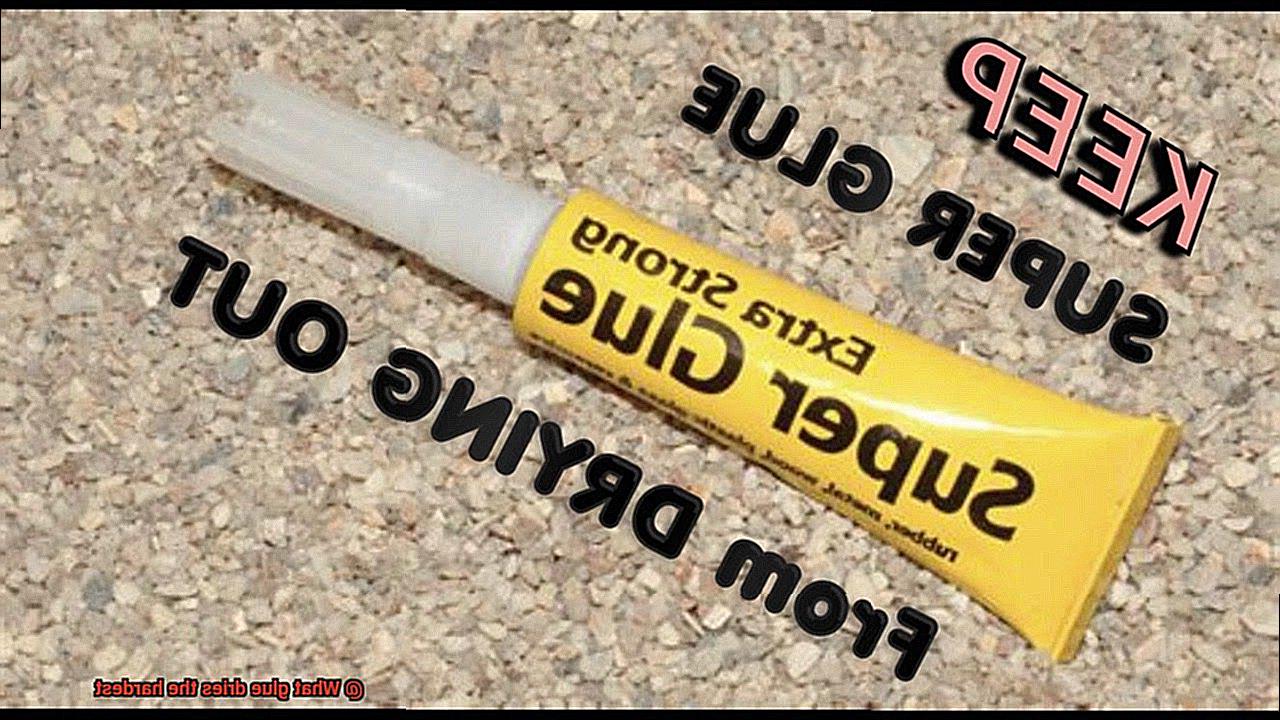
Selecting a flexible glue is crucial in projects involving materials prone to movement or vibrations. This factor is especially important in applications involving fabrics, rubber, or flexible plastics, as it helps prevent cracks or breaks in the bond over time.
Temperature resistance:
If your project involves exposure to extreme temperatures, ensure that the glue you choose can withstand these conditions. Look for temperature-resistant glues to ensure the longevity of your project and avoid bond failure or safety hazards.
Toxicity and safety:
Consider the toxicity and safety aspects of the glue, especially if you’re working in a confined or poorly ventilated area. Opt for low-odor or non-toxic glues to create a safe working environment and minimize health risks.
Ease of use:
Consider the ease of use when selecting a glue for your project. Choose a glue that suits your comfort level and skill set. Look for glues that offer convenient applicators or easy cleanup options, such as water-based adhesives that can be easily wiped away.
Advantages and Disadvantages of Each Type of Glue
Get ready because we’re about to explore the advantages and disadvantages of each type of glue. Whether you’re a crafty DIY-er or a professional woodworker, this guide will help you choose the perfect adhesive for your projects.
Let’s start with the heavyweight, epoxy glue. It’s known for its super strength and durability, making it ideal for bonding metal, plastic, wood, and ceramics. Withstanding water, chemicals, and heat, it’s perfect for indoor and outdoor applications. However, be patient as it takes its sweet time to fully cure. And don’t forget to mix those two components together.
Now onto super glue, also known as cyanoacrylate. This quick-bonding wonder is perfect for those who need instant adhesion. It forms an incredibly strong bond within seconds and works well on materials like plastic, rubber, metal, and glass. But beware. The bond can be brittle and prone to breaking under excessive force or vibrations. Removing it can be quite the challenge too.
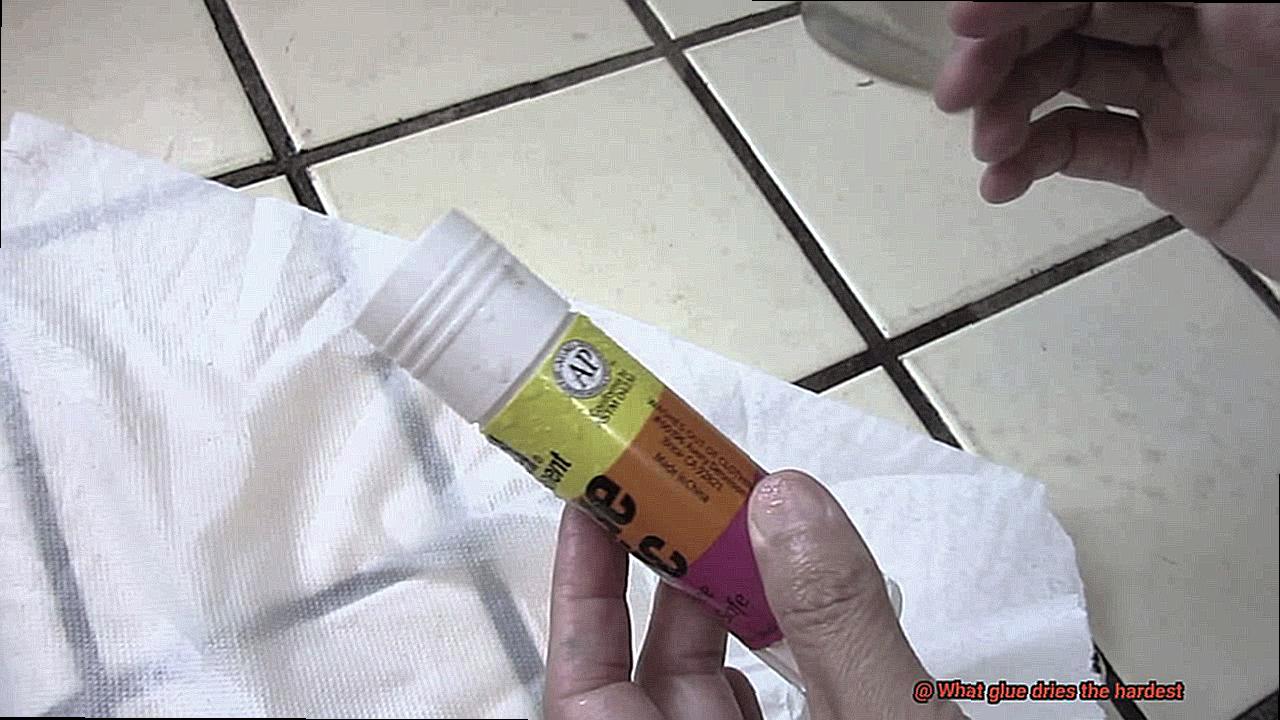
Next up is wood glue or PVA glue. It’s a favorite among carpenters and DIY-ers alike. This adhesive forms a strong bond on porous surfaces like wood and paper. It’s easy to use, dries clear, and can be sanded and painted over once dry. Just remember it may not work well on non-porous materials like metal or plastic.
Last but not least, we have hot glue – the superhero of crafting and DIY projects. Applied using a glue gun, hot glue offers instant bonding and adheres well to materials like fabric, foam, plastic, and lightweight wood. It sets quickly and provides a strong bond that allows for flexibility. Plus, if you need to make changes or remove the glue altogether, it’s a breeze. However, it may not be as durable as other adhesives.
Proper Surface Preparation for Maximum Hardness
When it comes to using glue, achieving maximum hardness is the key to ensuring the longevity and durability of your projects. And one crucial factor that plays a significant role in achieving this hardness is proper surface preparation. Let’s dive into why surface preparation is important and how it can affect the outcome of your glue bonding.
- Cleanliness is Crucial: Before applying glue, ensure that the surface you’re working with is clean, dry, and free from any contaminants like dirt, dust, grease, or oil. These pesky elements can interfere with the bonding process, preventing the glue from drying as hard as it should. To prepare the surface effectively, start by cleaning it thoroughly using a mild detergent and water. Scrub away any dirt or grime using a soft cloth or sponge. Rinse the surface with clean water and make sure it’s completely dry before proceeding.
- Removing Barriers: In some cases, you may need to remove any existing finishes or coatings from the surface to ensure proper adhesion. This can be done using sandpaper or a chemical stripper, depending on the type of finish. Just make sure to follow the manufacturer’s instructions for any chemical products used.
- Roughen It Up: Once the surface is clean and dry, it’s time to roughen it up slightly. This step increases the surface area for the glue to bond to, ultimately enhancing its strength. Lightly sand the surface using fine-grit sandpaper, making sure to sand in the direction of the grain if you’re working with wood.
- Banishing Debris: After sanding, don’t forget to remove any dust or debris from the surface. A clean cloth or compressed air can do wonders in ensuring that no particles interfere with the bonding process.
- Porous Surfaces: If you’re working with porous materials like wood or concrete, applying a primer or sealer before gluing is highly recommended. This step seals the surface and prevents excessive absorption of the glue, which can weaken the bond.
- The Right Glue for the Job: Not all glues are suitable for every type of material. Some glues work better on specific surfaces, so it’s important to choose the right glue for your project. Consider factors like the materials being bonded, the desired strength of the bond, and any environmental factors that may affect the glue’s performance.
- The Final Bond: Now that your surface is properly prepped, it’s time to apply the glue. Follow the manufacturer’s instructions regarding application techniques and curing times. Apply an even layer of glue to both surfaces being bonded and press them firmly together. To ensure a strong bond, use clamps or other means of securing the surfaces in place until the glue has fully cured.
Curing Conditions for Optimal Results
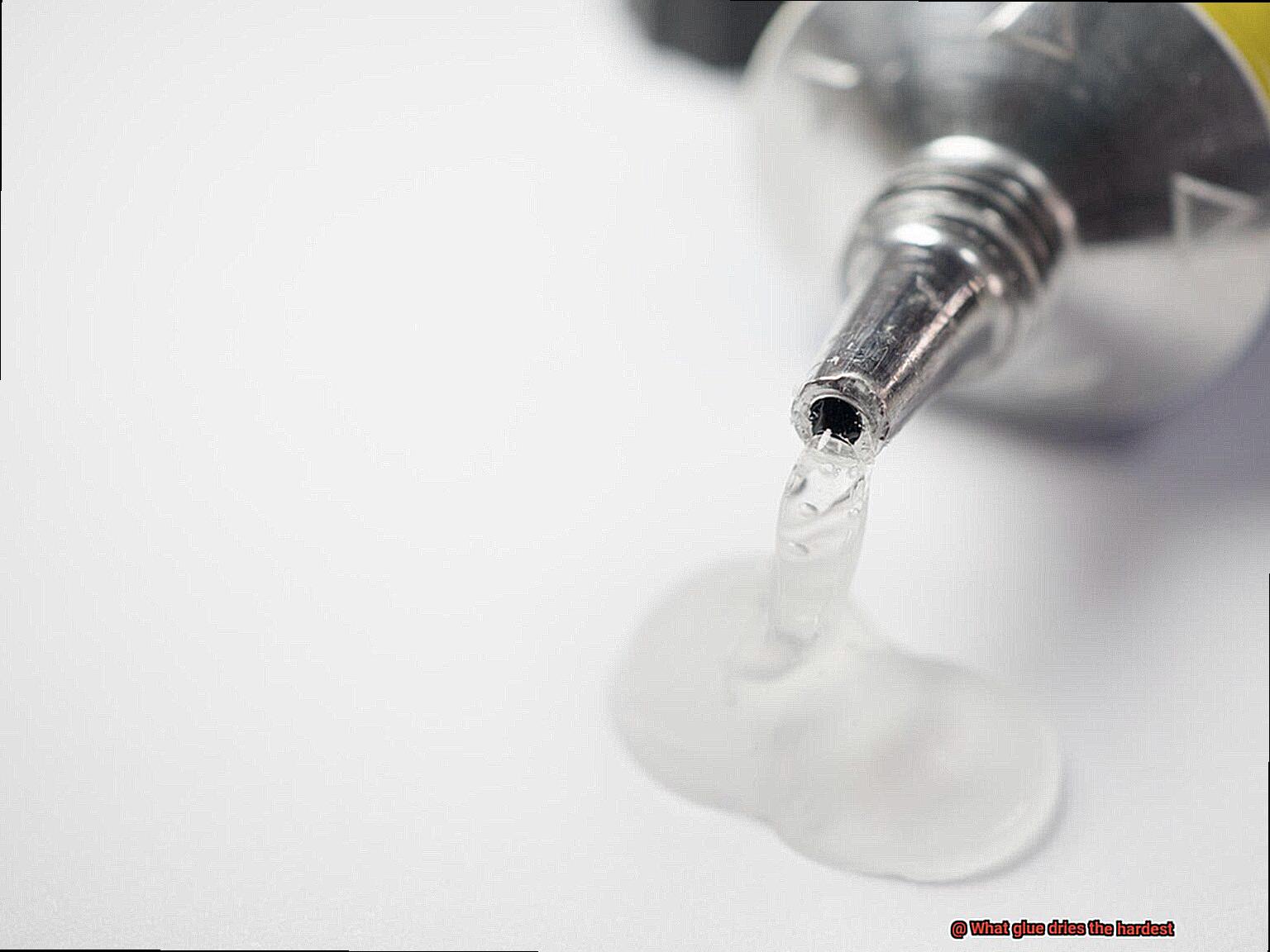
Look no further. In this blog post, we will dive into the world of curing conditions and their critical role in achieving optimal results with glue. So, grab your reading glasses and let’s get started.
Curing Time:
To unlock the full potential of your glue, it’s crucial to understand the recommended curing time. Rushing the process can lead to weaker bonds and reduced hardness. Patience is key. Allow the glue to dry fully according to the manufacturer’s instructions for maximum bond strength and hardness.
Temperature:
Maintaining the right temperature during the curing process is essential. Most glues perform best at room temperature, around 70°F (21°C). Extreme temperatures, whether too hot or too cold, can disrupt the bonding process and weaken the resulting glue. Don’t let the heat or cold sabotage your glue game. Keep the curing environment within the recommended temperature range for optimal results.
Humidity:
Humidity levels can significantly impact the curing process. Some glues are sensitive to moisture and require specific humidity conditions for optimal results. High humidity can slow down drying, while low humidity can cause the glue to dry too quickly, resulting in weaker bonds. Strike the right balance between too much and too little humidity by following the manufacturer’s recommendations.
Ventilation:
Proper ventilation is vital for successful curing. Adequate airflow helps remove volatile components from the glue, allowing it to dry properly and harden. Poor ventilation can lead to trapped moisture or solvent residues, affecting bond strength and hardness. Let the fresh air in and say goodbye to weak bonds. Ensure there is sufficient airflow in the curing area, especially when working with glues that produce strong fumes.
Pressure Application:
To achieve the strongest and hardest glue bonds, applying external pressure or clamping may be necessary. This helps ensure maximum contact between the glue and the surfaces being bonded, resulting in enhanced bond strength and hardness. Don’t underestimate the power of a little squeeze. Follow the manufacturer’s recommendations regarding pressure application and duration for optimal results.
Tips for Using Different Types of Glue
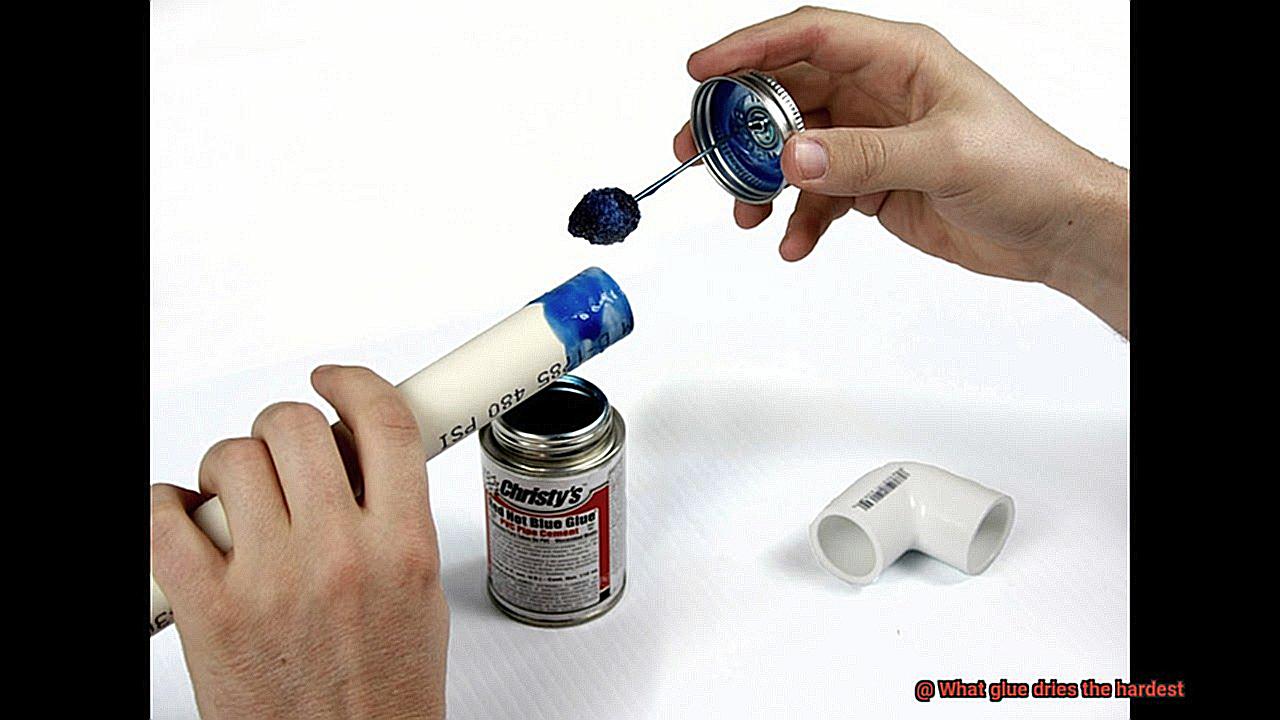
Using glue may seem like a simple task, but it is crucial to follow safety precautions to protect yourself and achieve the best results. In this blog post, we will discuss the importance of following safety precautions when using different types of glue. By understanding the risks and taking necessary precautions, you can ensure a safe and successful glue application.
Understand the Risks:
Glues contain chemicals that can be harmful if not handled properly. Some glues emit fumes that can irritate the respiratory system or cause allergic reactions. Others may be flammable or toxic if ingested. It is important to read the safety information provided by the manufacturer and understand the potential risks associated with each type of glue.
When using glues that emit fumes, it is essential to work in a well-ventilated area or wear a mask to protect your respiratory system. If you have sensitive skin, consider wearing gloves to prevent direct contact with the glue. By understanding the risks, you can take appropriate measures to protect yourself.
Follow Safety Instructions:
Every type of glue comes with specific instructions for use, including application techniques, drying time, and safety recommendations. It is crucial to read and follow these instructions carefully. Skipping or disregarding safety instructions can lead to accidents or poor results.
For example, some glues require a certain temperature range or humidity level for optimal bonding. Ignoring these specifications may result in weak bonds or prolonged drying time. By following the instructions provided by the manufacturer, you can ensure a safe and effective glue application.
Work in a Well-ventilated Area:
Many types of glue release fumes during application and drying. These fumes can be harmful if inhaled in large quantities or over a long period. To protect yourself, it is important to work in a well-ventilated area.
Open windows or doors to allow fresh air to circulate. If ventilation is limited, consider using a fan or wearing a respirator mask to reduce exposure to fumes. By working in a well-ventilated area, you can minimize the risk of respiratory irritation or other health issues.
Store Glue Properly:
Proper storage of glue is essential for maintaining its effectiveness and safety. Most glues should be stored in a cool, dry place away from direct sunlight or extreme temperatures. Storing them upright and tightly sealed will prevent them from drying out or becoming less effective over time.
Additionally, it is crucial to keep glues out of reach of children and pets. Some glues may look appealing or have a sweet smell, making them attractive to young children or animals. To prevent accidental ingestion or exposure, store glues in a secure location.
Common Applications for Different Types of Glue
Not all glues possess the same powers. Each type of glue has its own unique properties and applications, making it crucial to choose the right one for your specific project. In this guide, we will explore the common applications for different types of glue, helping you find the perfect adhesive for your next masterpiece.
Super Glue – The Instant Fixer:
Super glue is the superhero of the glue kingdom. It is ideal for fixing broken toys, mending jewelry, or sticking small parts together. This adhesive’s incredible strength makes it perfect for materials like plastic, metal, and ceramics. What truly sets super glue apart is its lightning-fast drying time. In a matter of seconds, it forms an unbreakable bond, saving the day when you’re in a hurry.
Wood Glue – The Carpenter’s Best Friend:
Wood glue is a carpenter’s most trusted companion when it comes to woodworking projects. With its high viscosity and thick consistency, wood glue creates a powerful bond that withstands stress and pressure. Whether you’re constructing a bookshelf or repairing a wooden chair, wood glue ensures a strong and durable connection between wood surfaces.
Epoxy Adhesive – The Ultimate Bonding Agent:
When you need an adhesive that can conquer any material, look no further than epoxy adhesive. Composed of a resin and a hardener, this versatile glue forms an incredibly strong and resilient bond. It can withstand heat, moisture, and even chemicals, making it suitable for metals, glass, plastics, and wood. Whatever your project demands, epoxy adhesive will be there as your loyal companion.
Hot Glue – Crafters’ Secret Weapon:
Crafters rejoice. Hot glue is here to save the day with its molten state and rapid solidification. Applied using a hot glue gun, this thermoplastic glue forms a robust bond on various materials like fabric, plastic, and wood. Whether you’re creating handmade cards or decorating your living space, hot glue is your secret weapon for quick and reliable adhesive solutions.
Silicone Adhesive – The Flexible Friend:
When it comes to extreme temperatures and moisture resistance, silicone adhesive is the go-to option. This flexible glue forms a durable bond, perfect for sealing gaps or bonding materials that require flexibility. From plumbing projects to automotive applications, silicone adhesive has got you covered with its adaptability and reliability.


